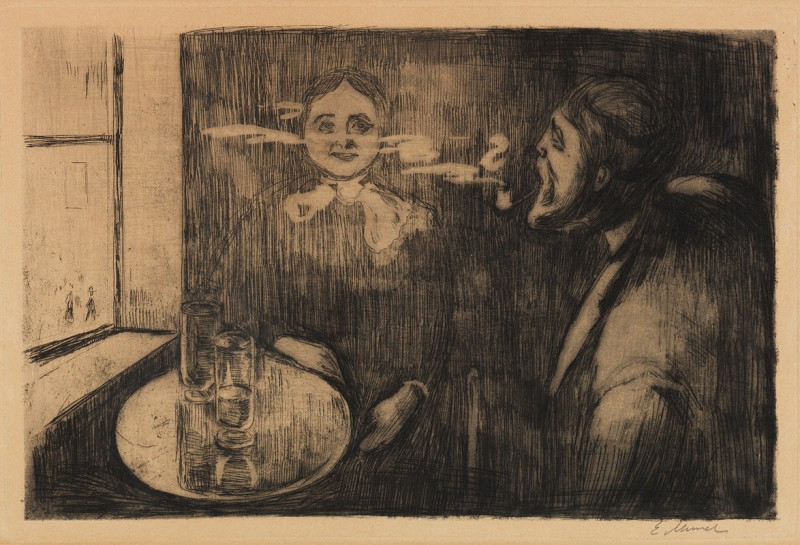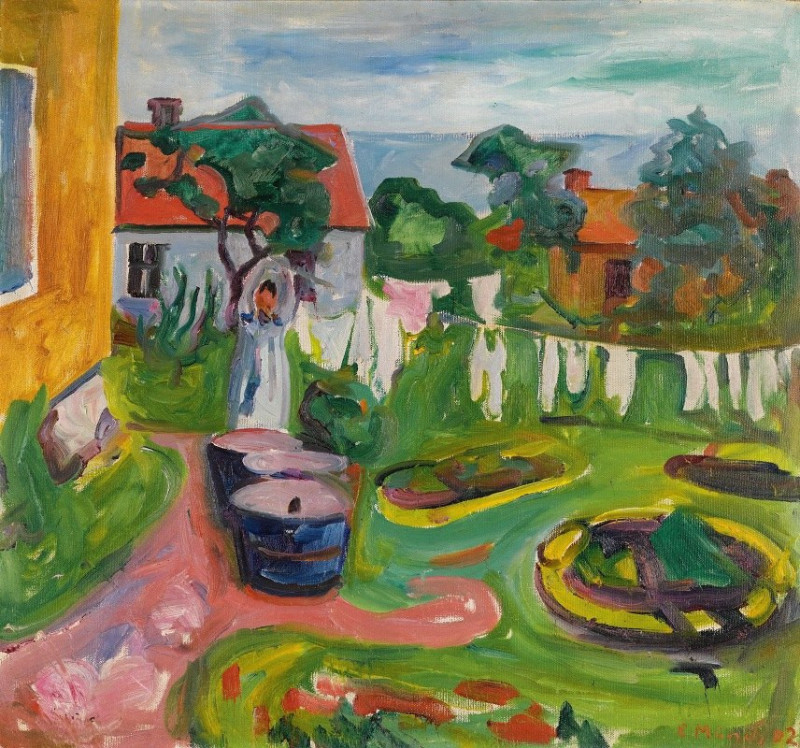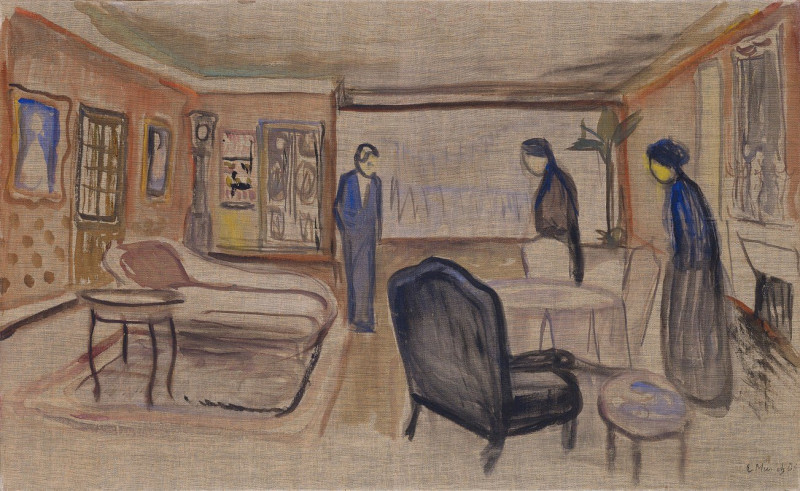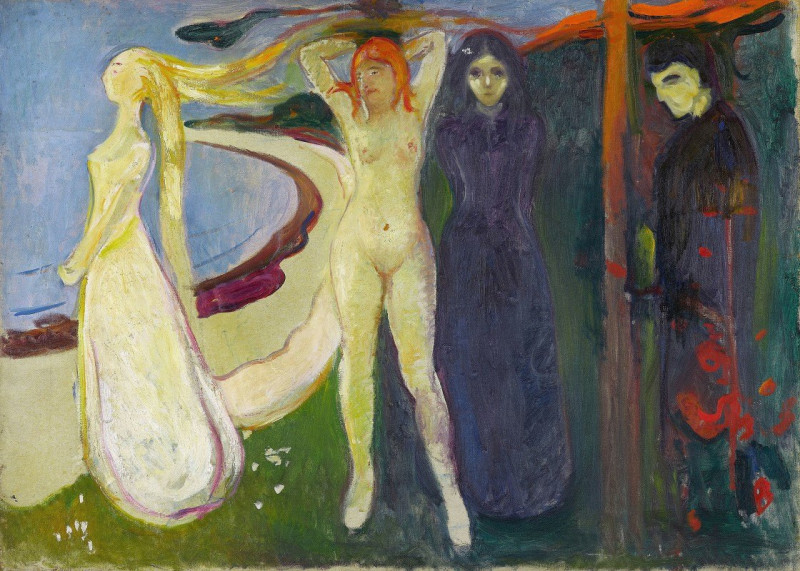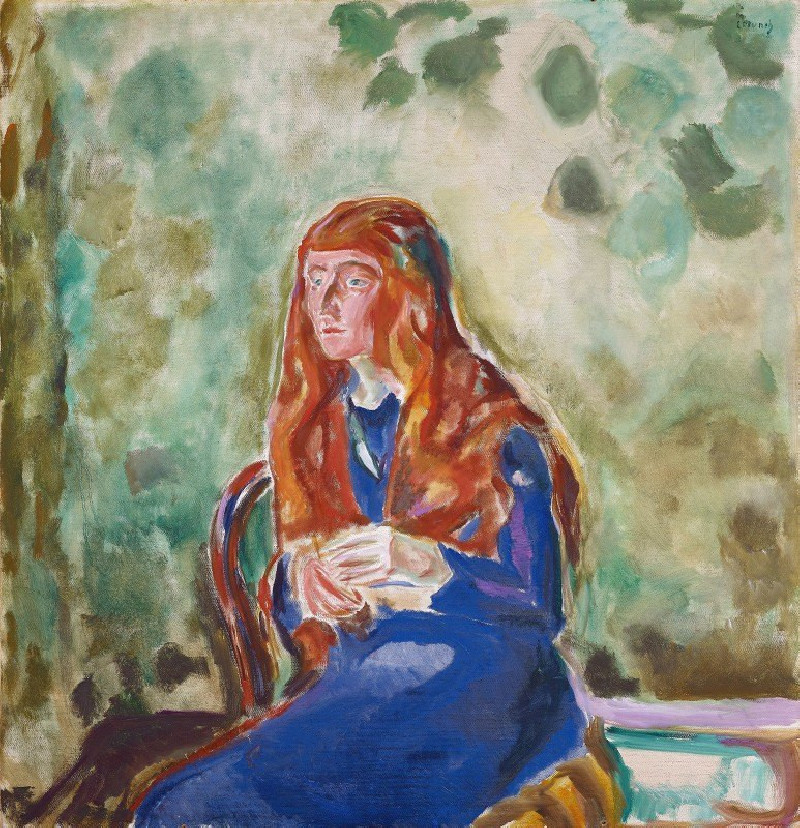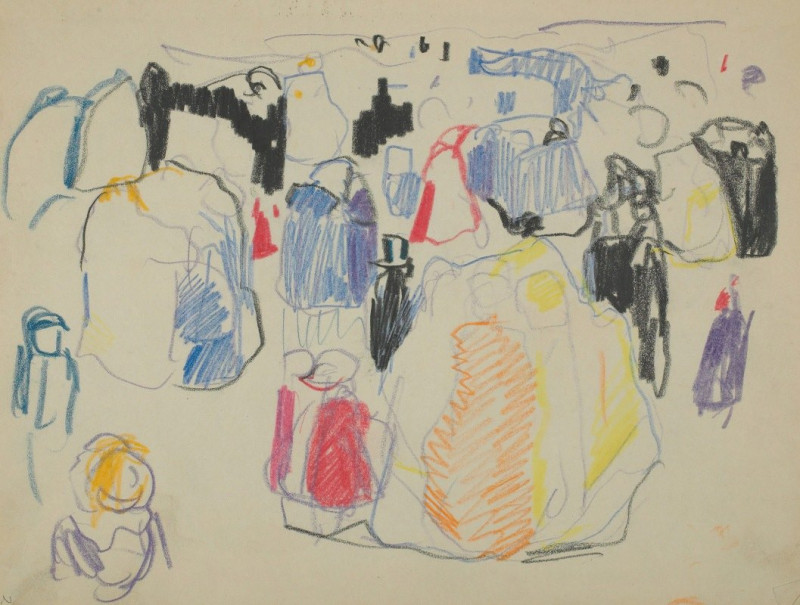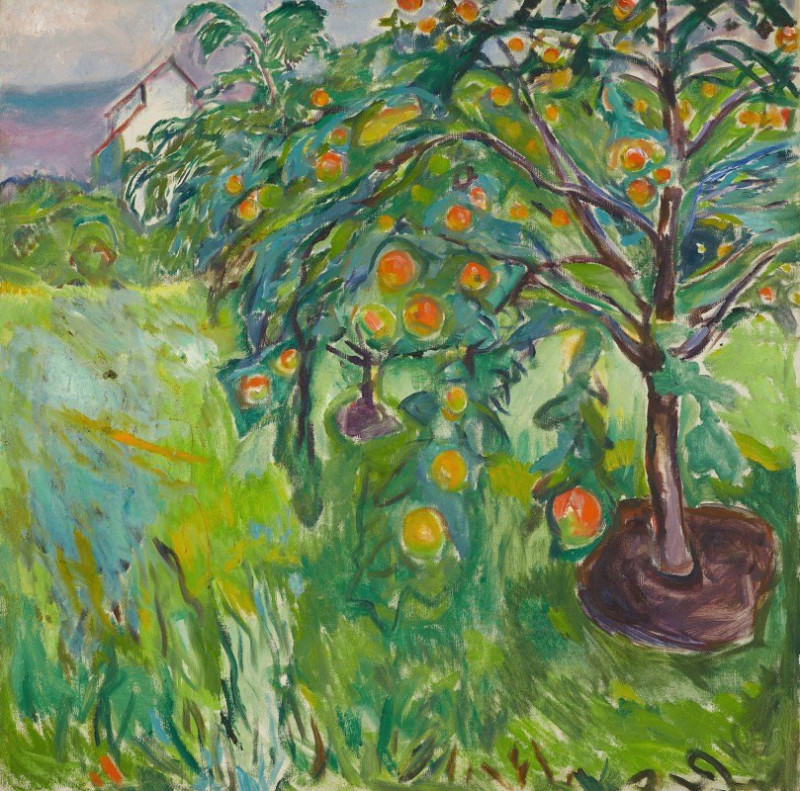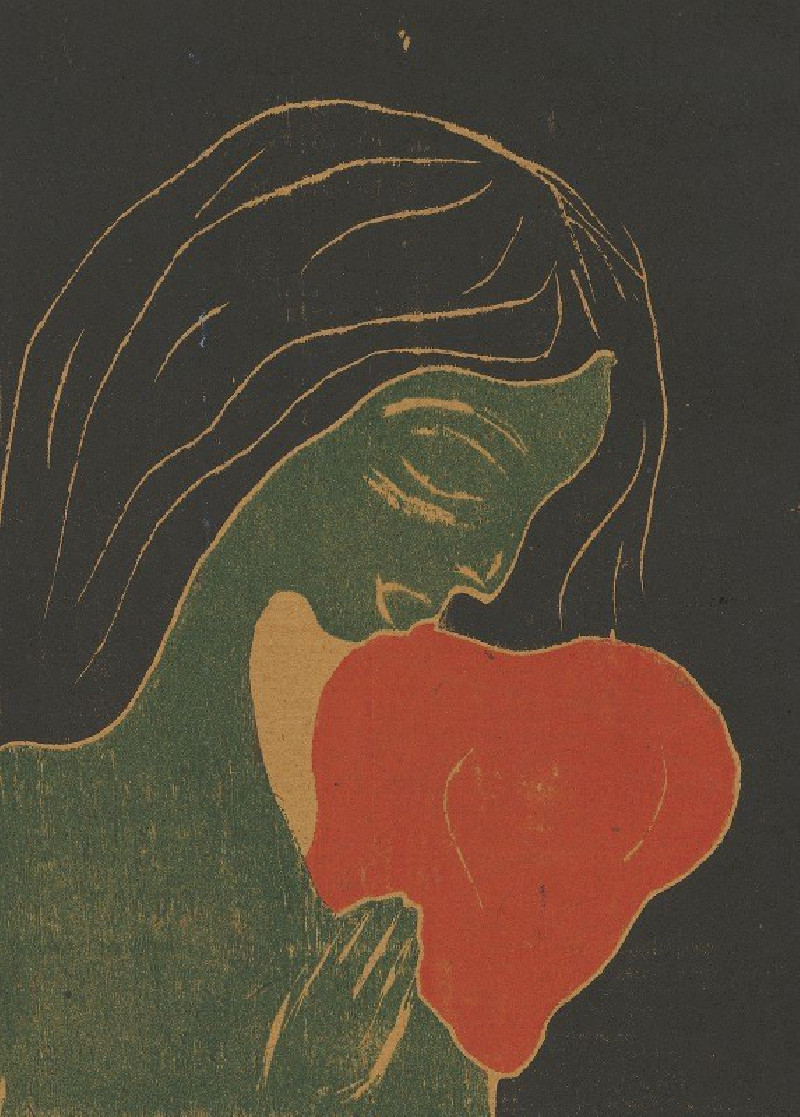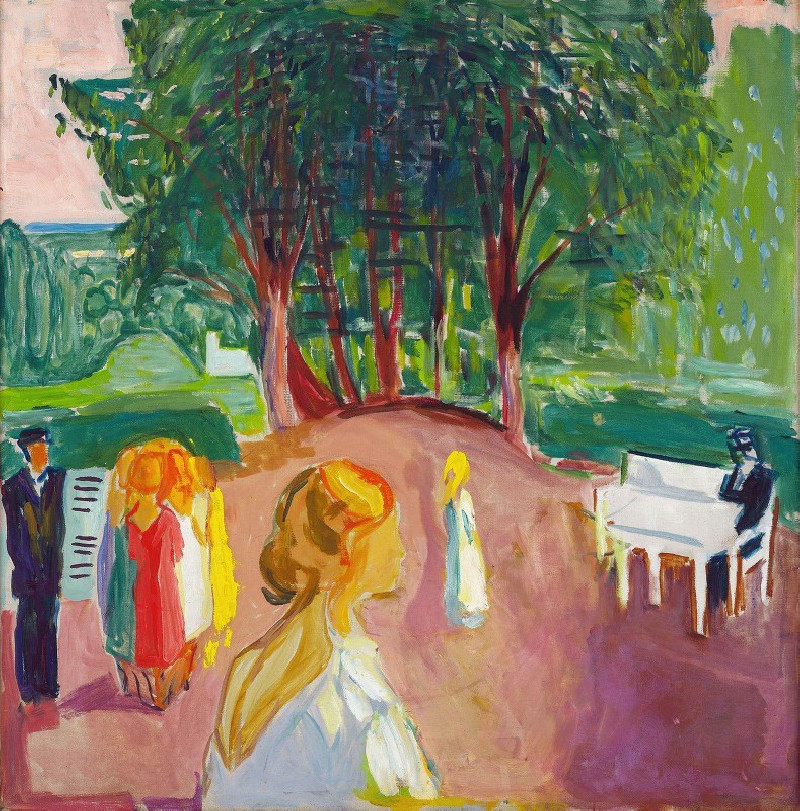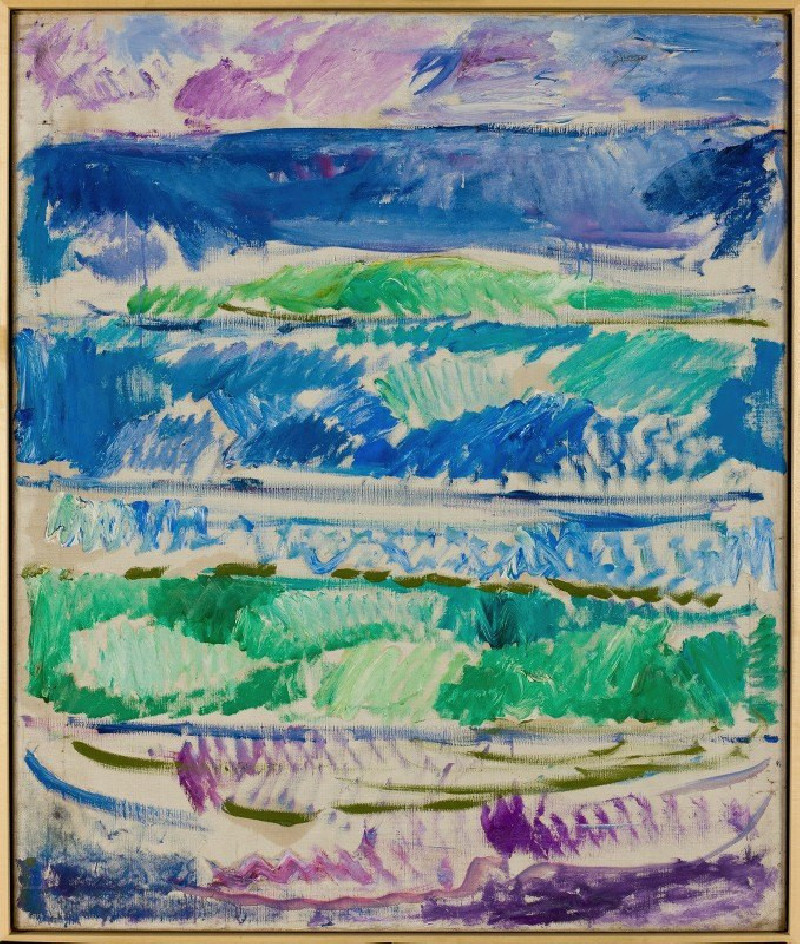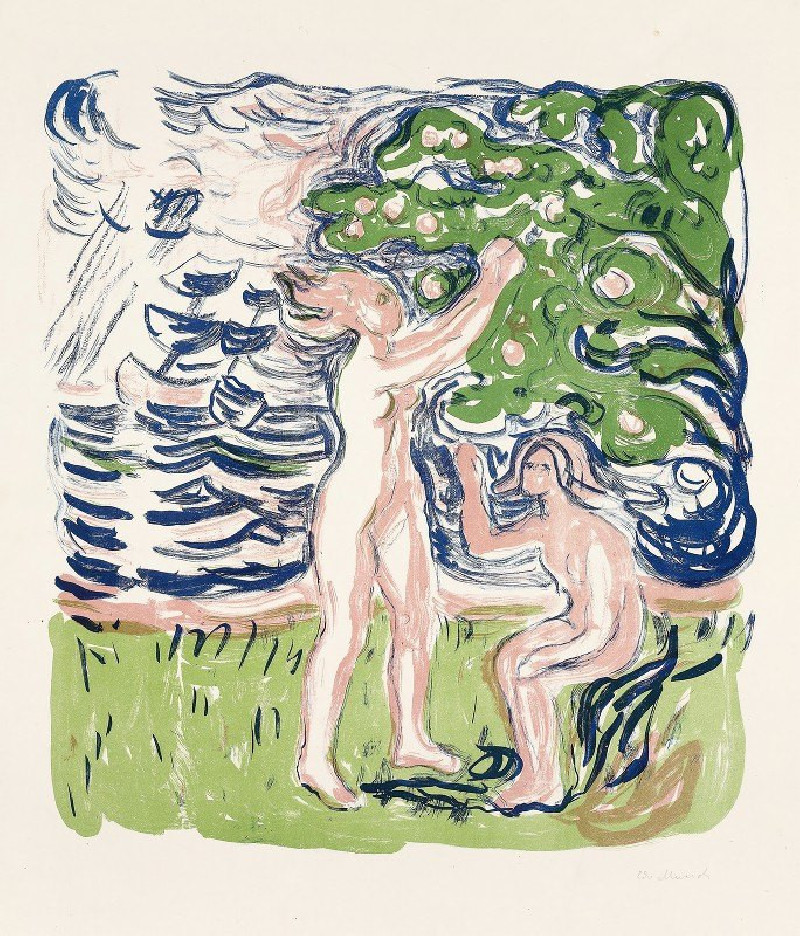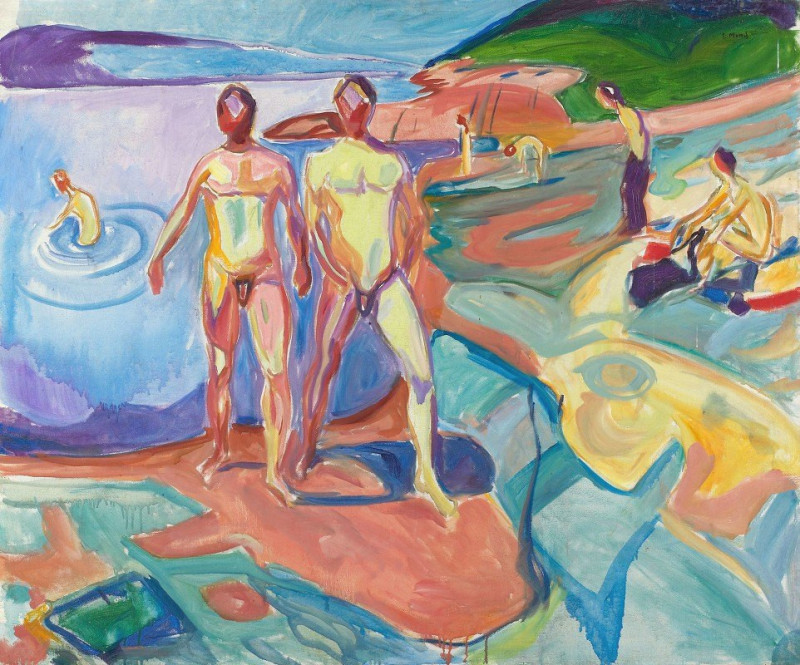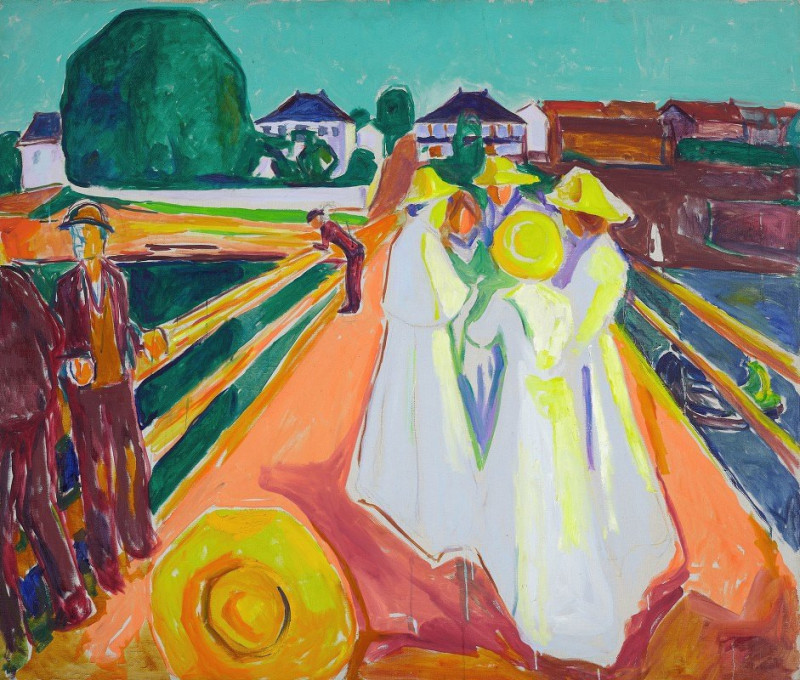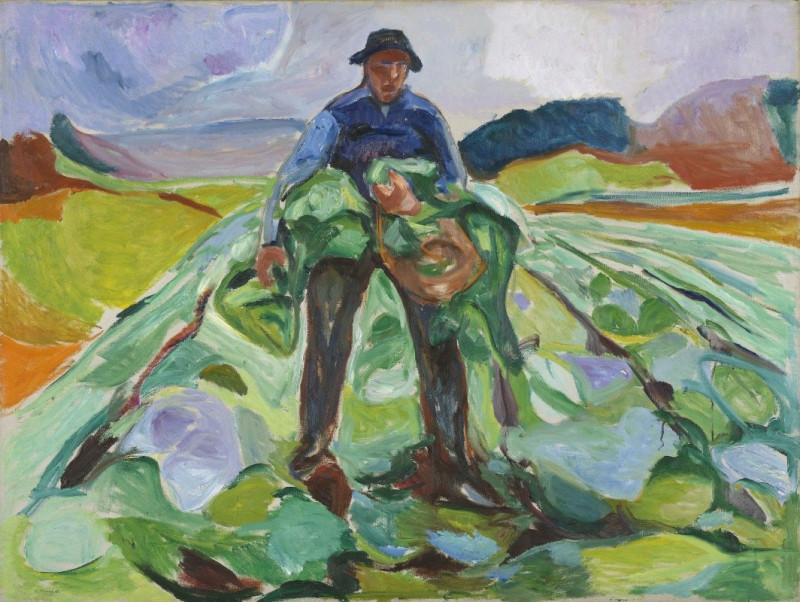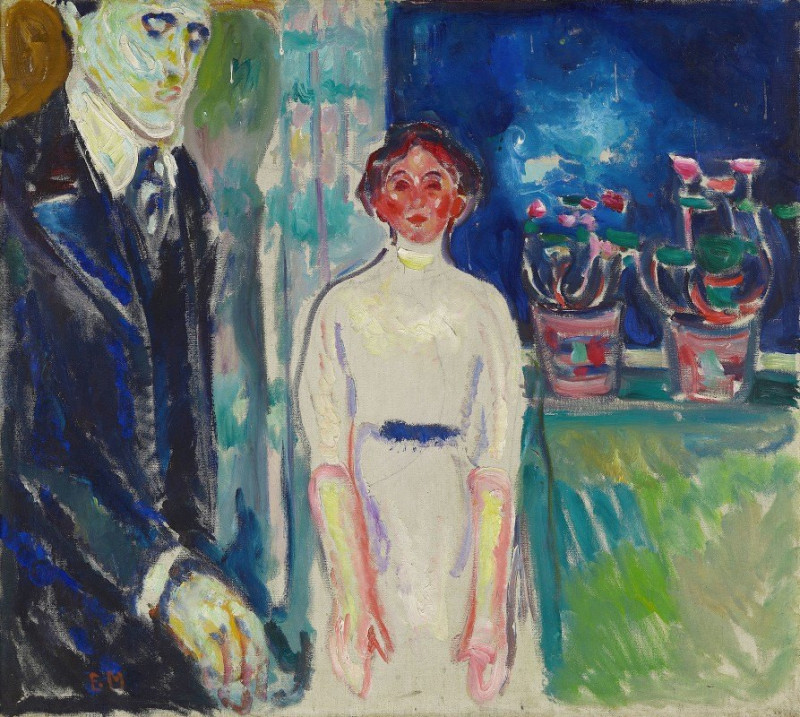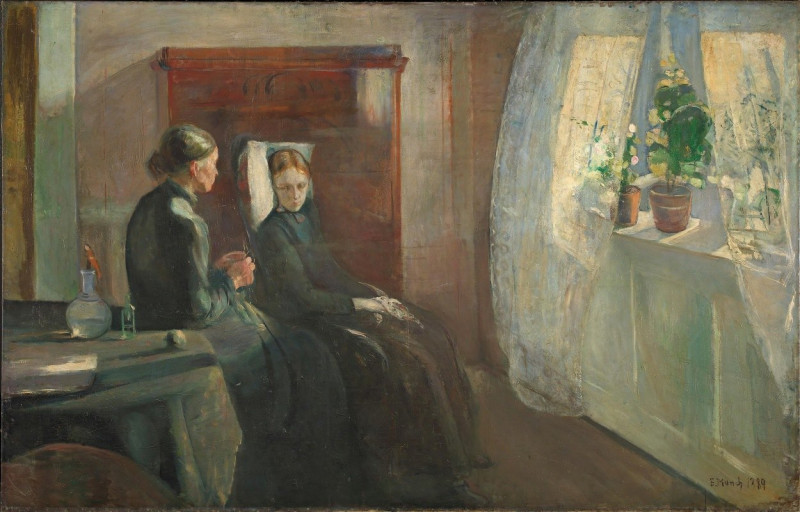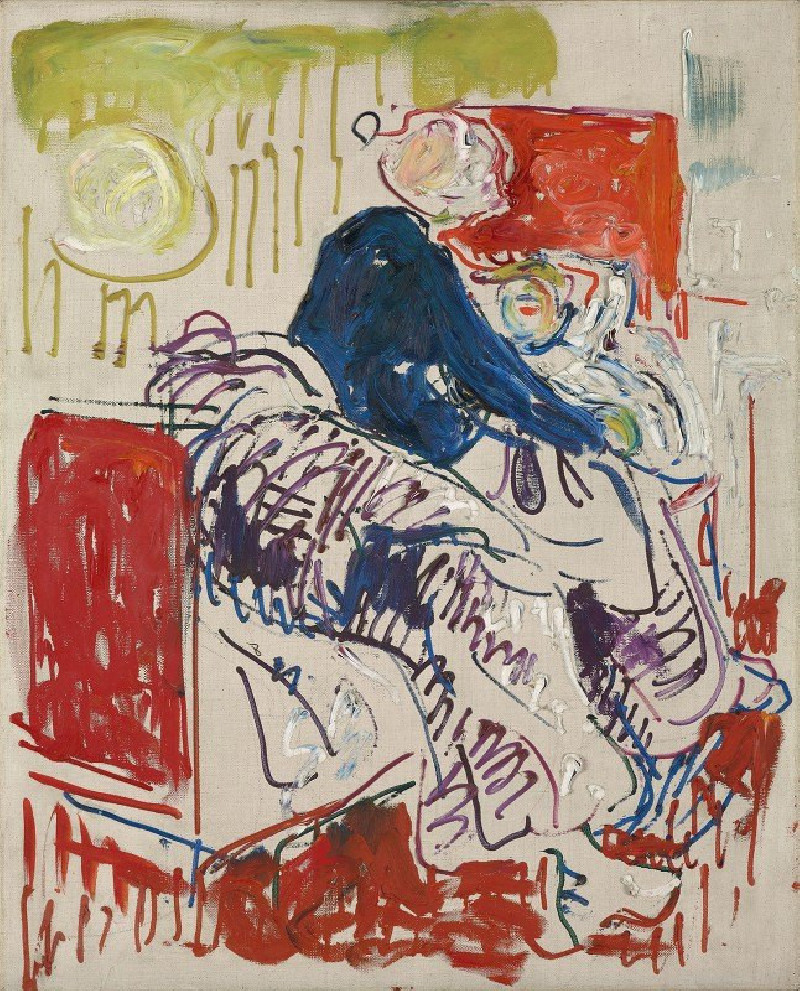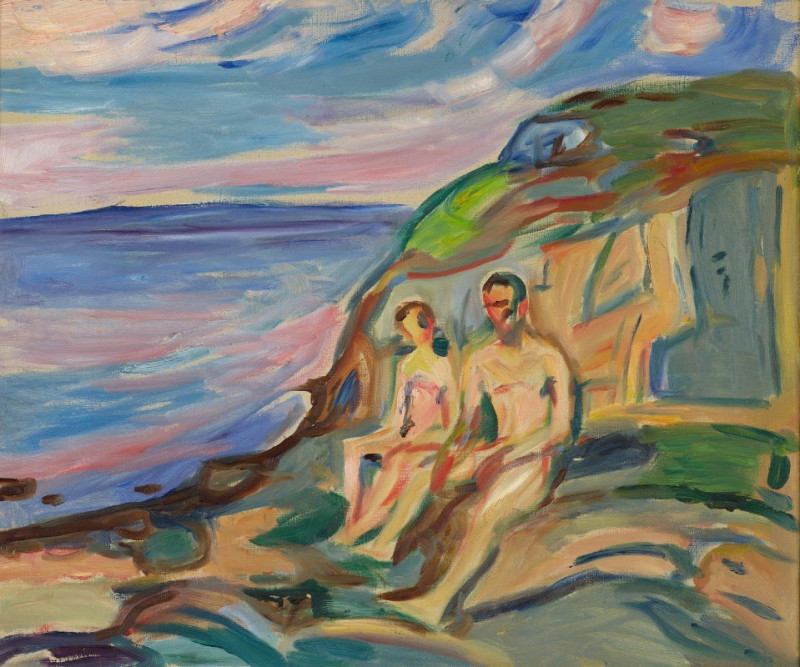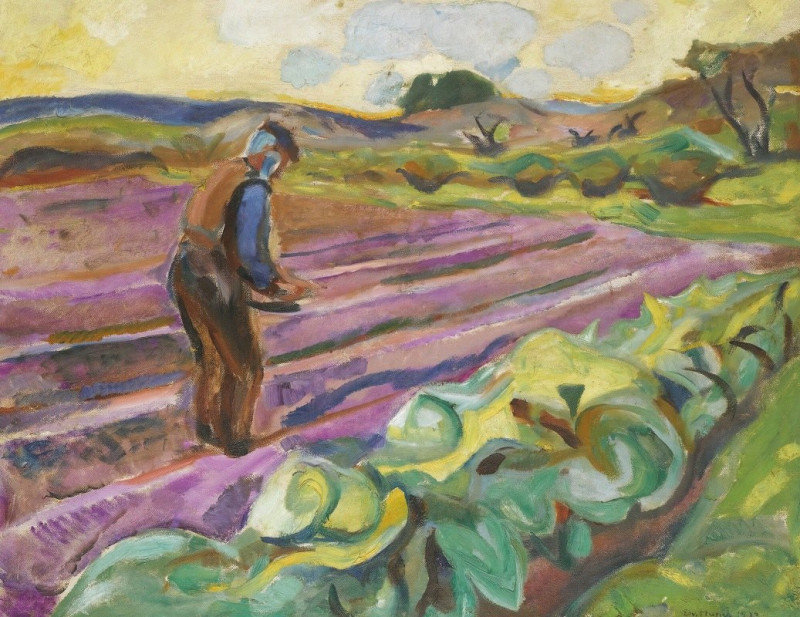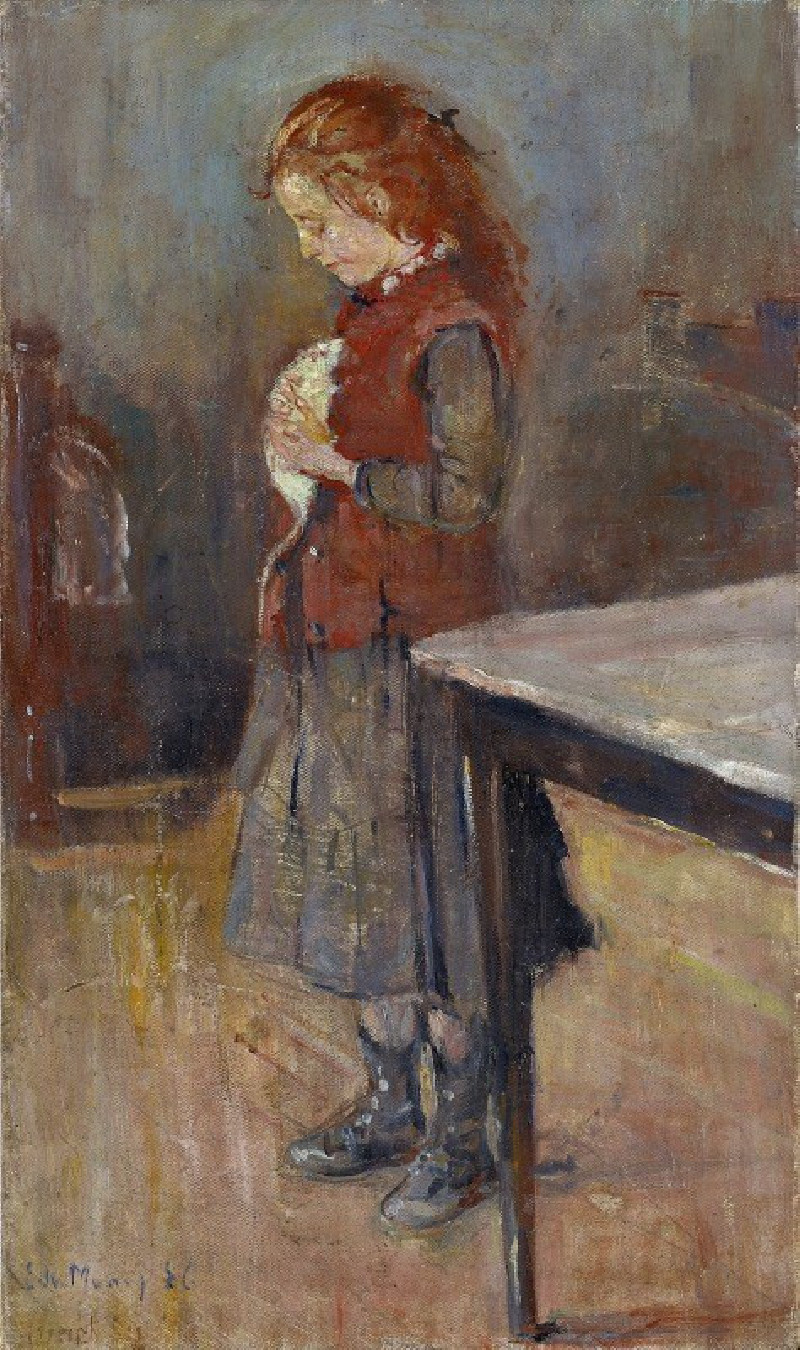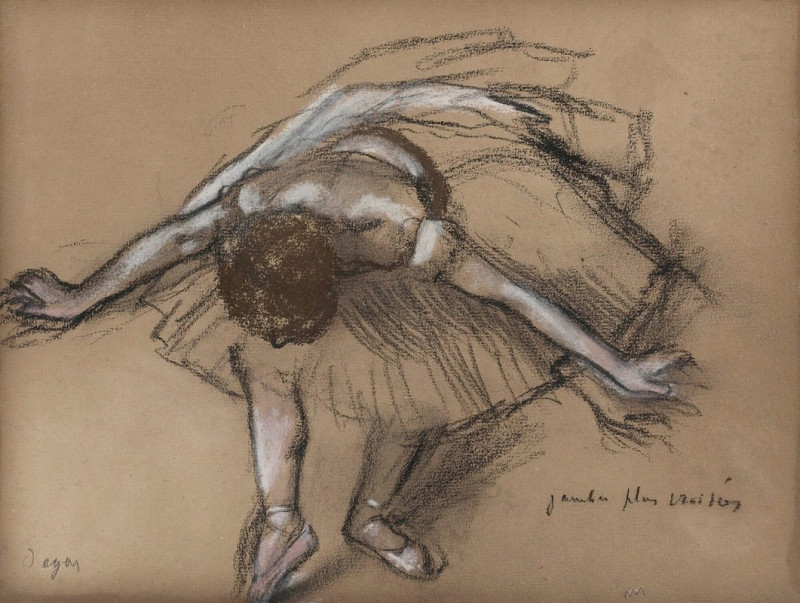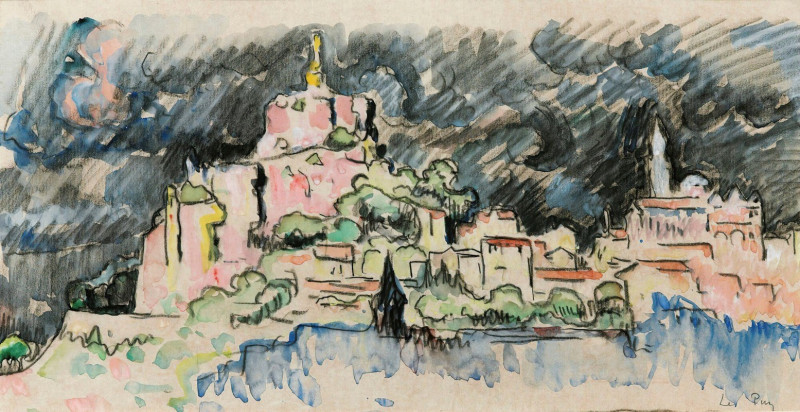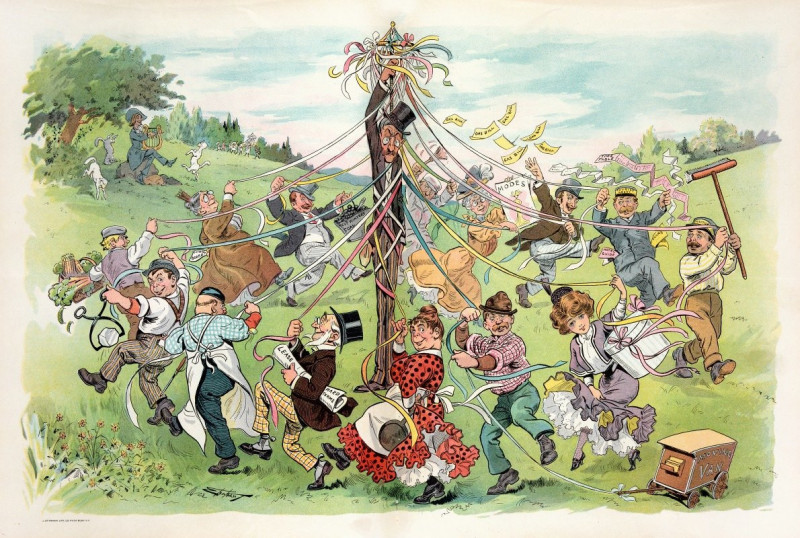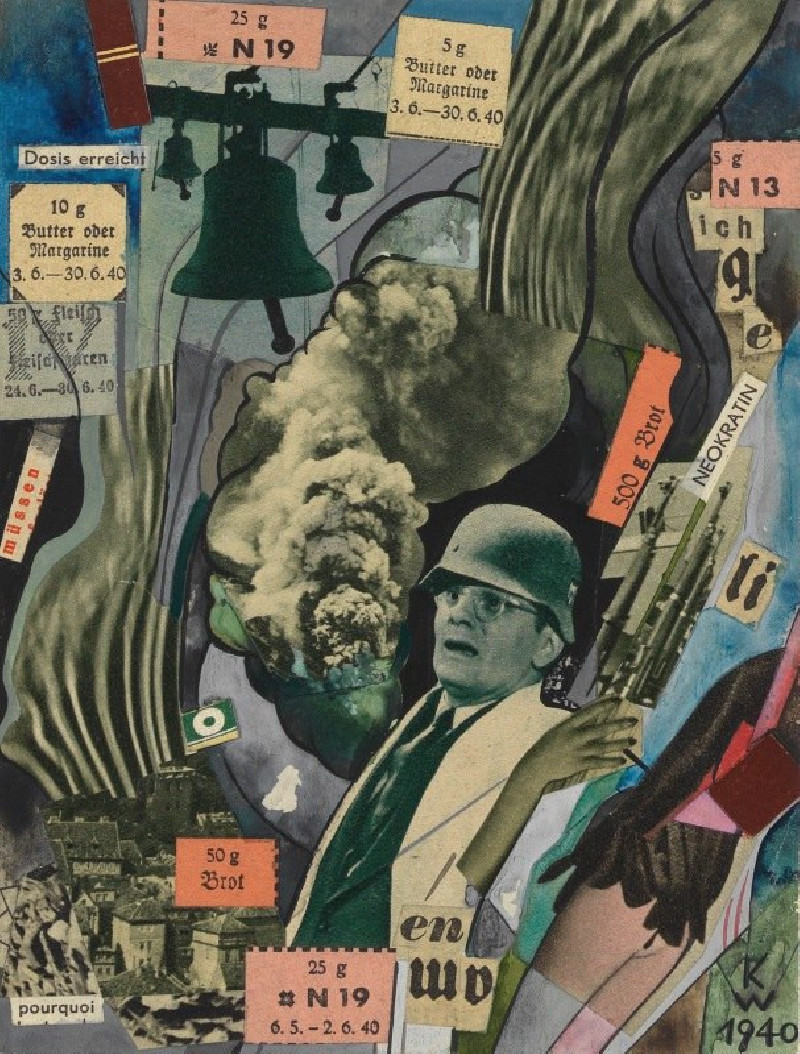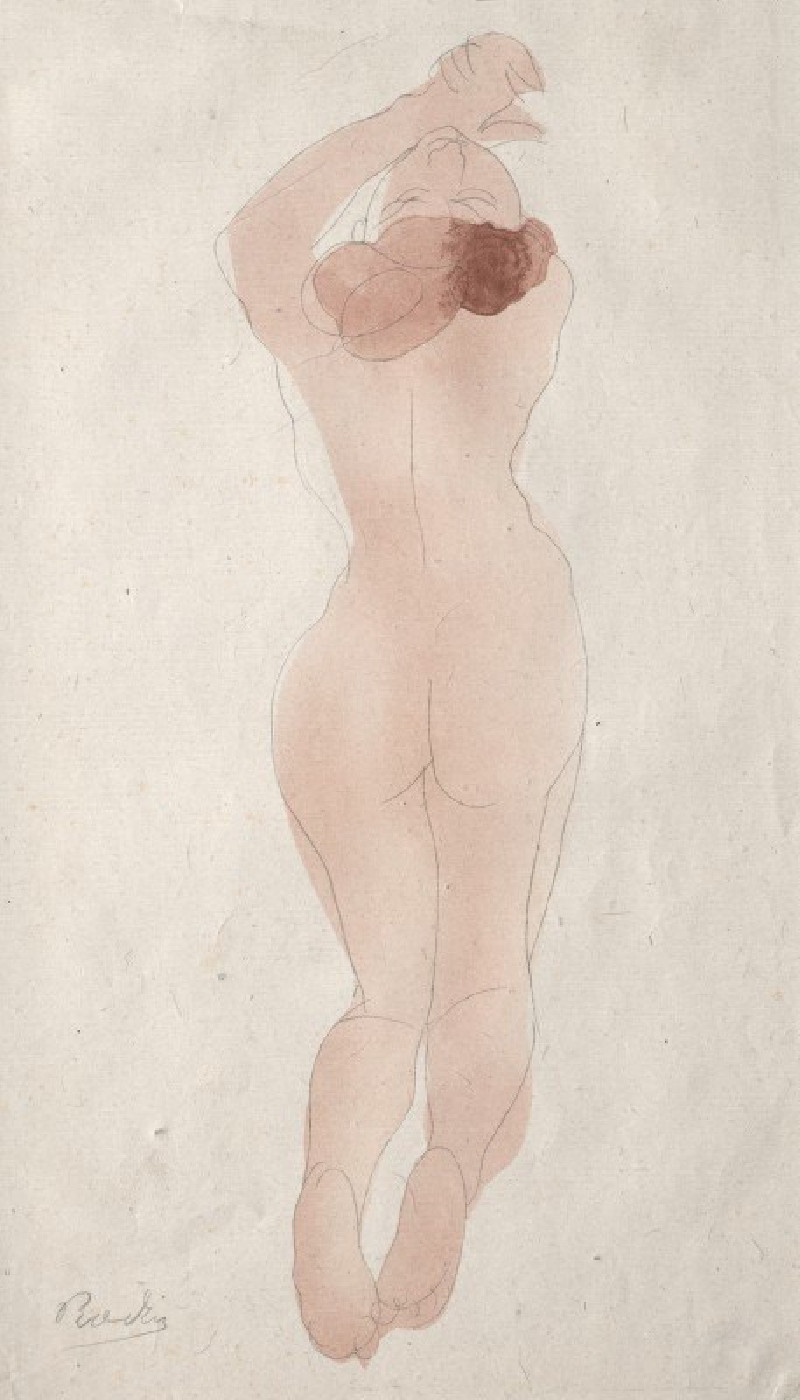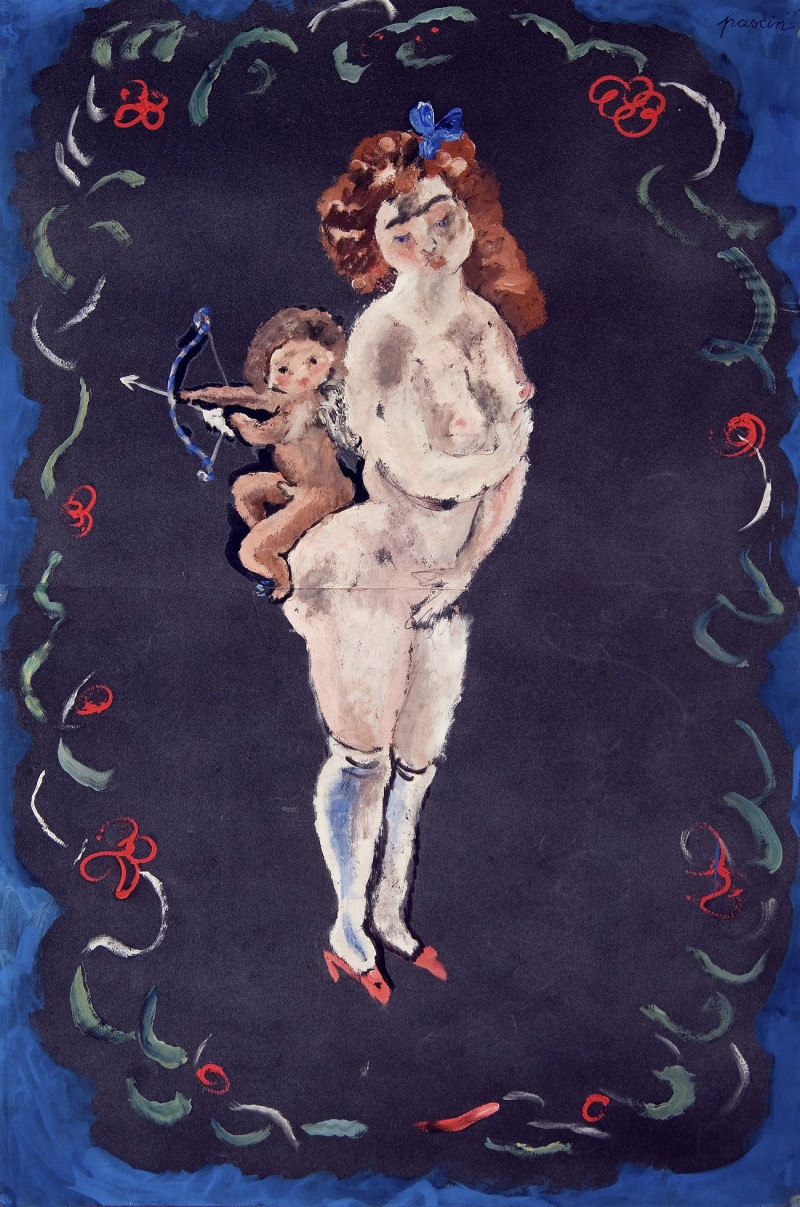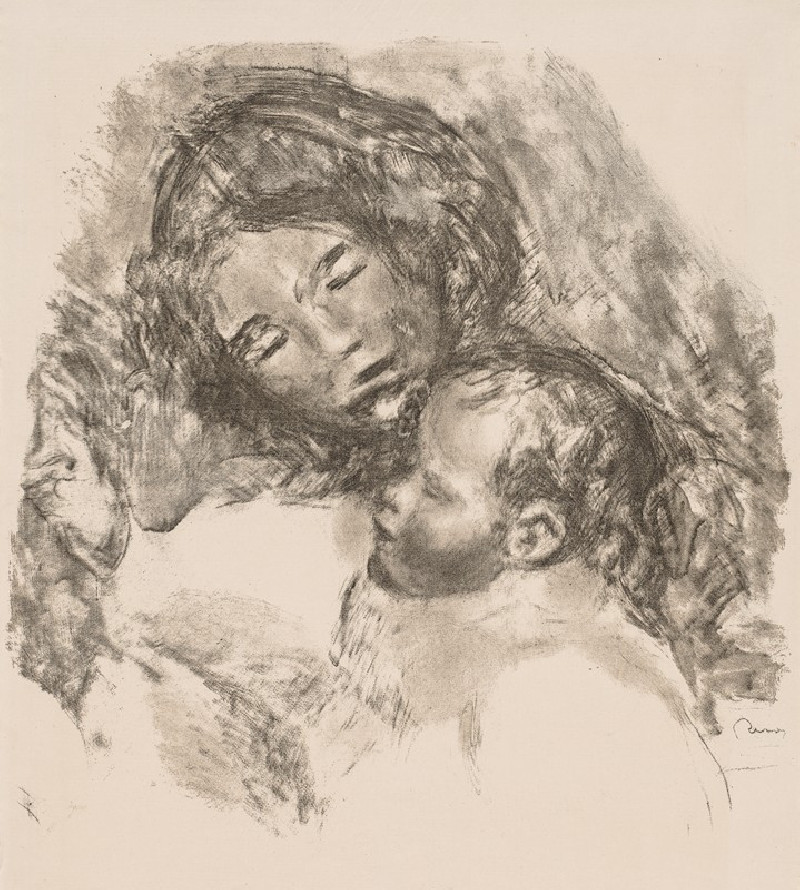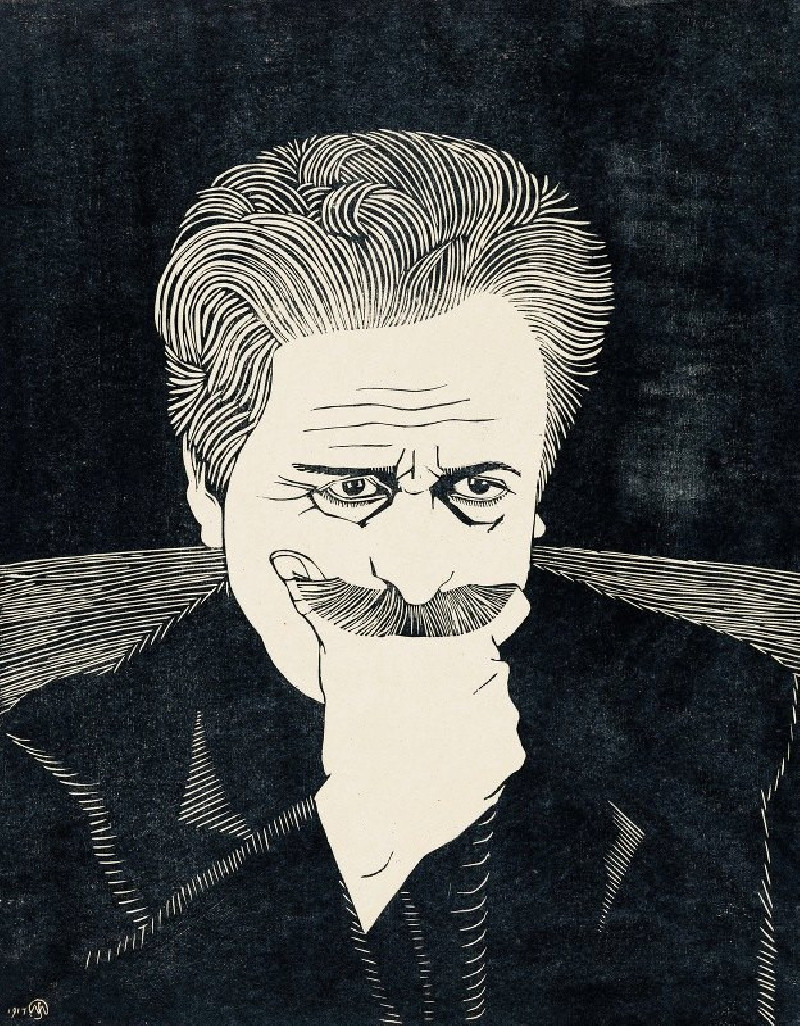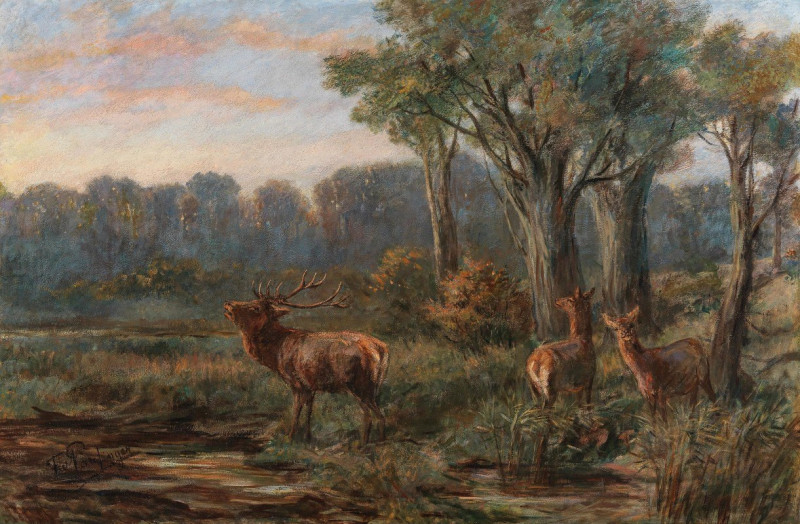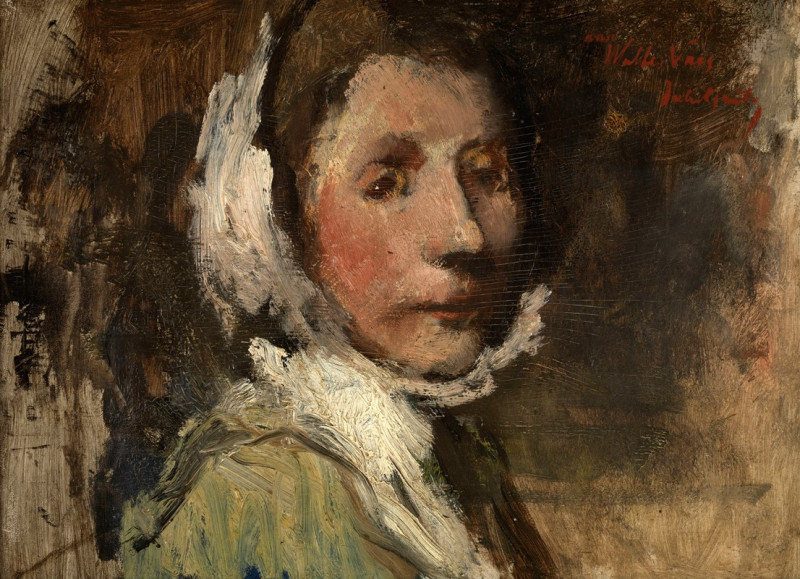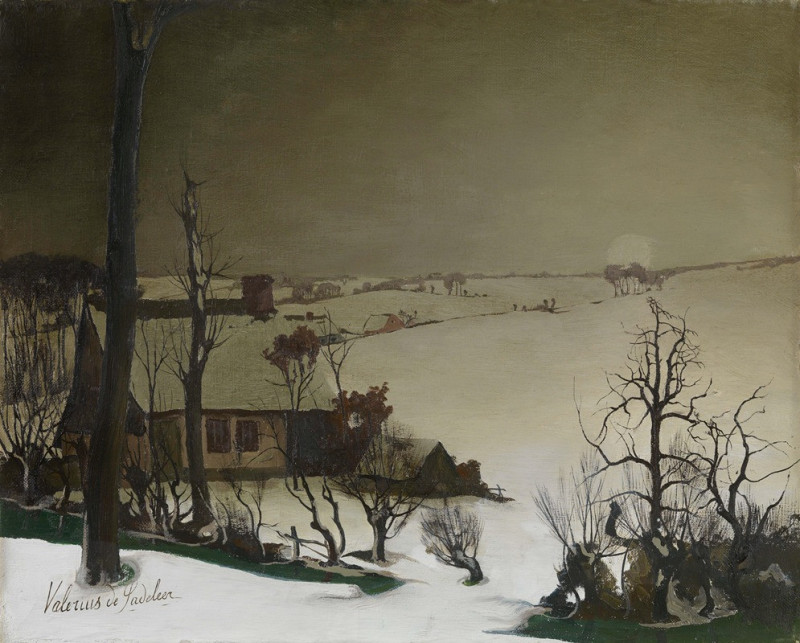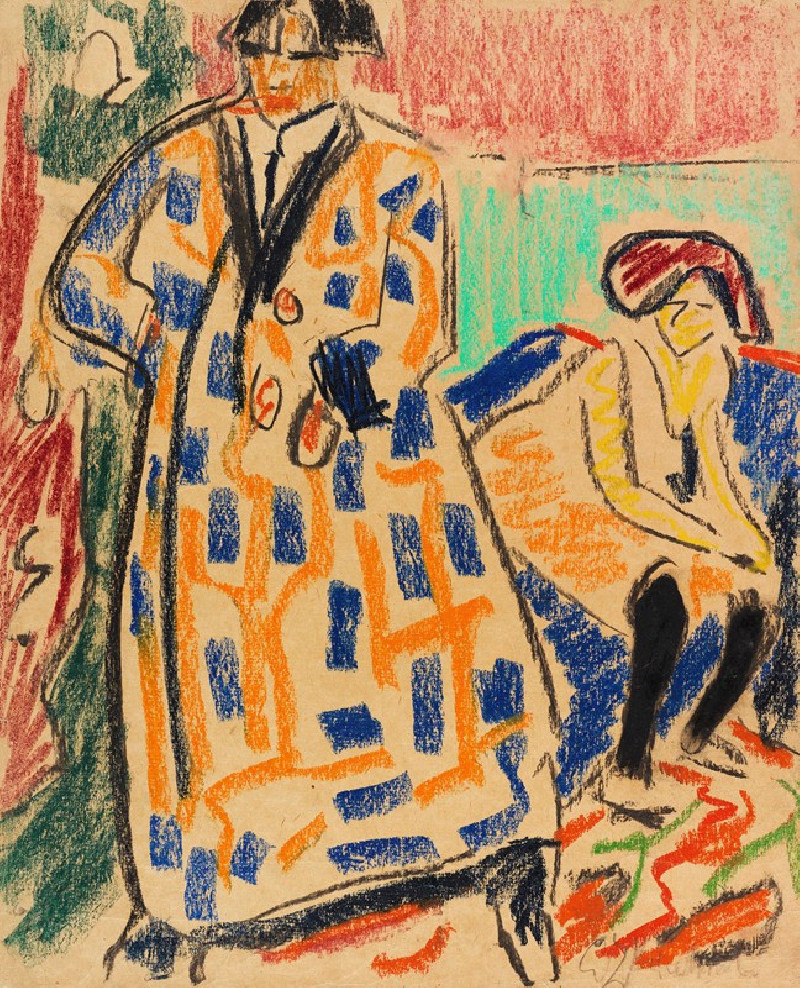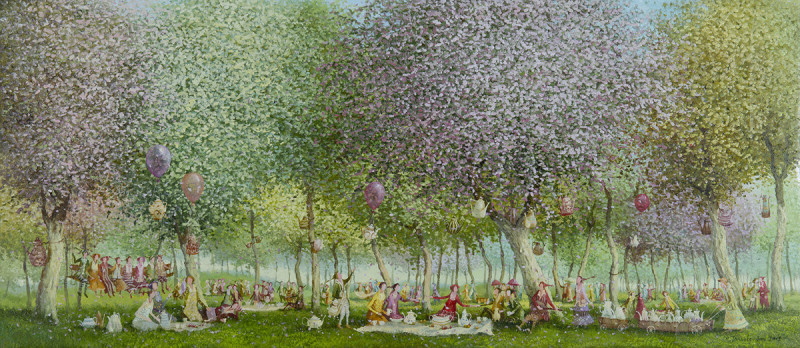Tête-à-Tête (Plauderstunde) (1894)
Technique: Giclée quality print
Recommended by our customers
More about this artwork
The painting "Tête-à-Tête (Plauderstunde)" (1894) by Edvard Munch captures a seemingly intimate and intense moment between two individuals at a table, executed in Munch’s characteristic expressionistic style. The composition is steeped in a haunting, somber tone that adds depth to the depicted scene.In the image, a man and a woman are seated across from each other. The man, positioned to the right, appears to be speaking animatedly, his mouth open as if caught in mid-speech or exclamation, suggesting a moment of passionate or emphatic communication. His expression and posture convey a sense of urgency or deep emotion. On the other side of the table, the woman faces the man, her expression calm and somewhat enigmatic, almost Mona Lisa-like in its inscrutability. Her calm demeanor contrasts starkly with the man's fervent expression.A striking feature of this artwork is the smoke-like forms stretching between the two figures, emanating from the man's mouth to the woman, creating a visual representation of verbal exchange, perhaps symbolizing the transfer of thoughts, feelings, or energies between them. This surreal element adds a dreamlike quality to the scene, emphasizing the intensity of their interaction.Foreground elements such as a glass bottle and a wall or barrier partially frame the figures, drawing focus to their faces and upper bodies, making their expressions and the mysterious smoke the focal points of the composition.
Delivery
Returns
Edvard Munch (12 December 1863 – 23 January 1944) was a Norwegian painter. His best known work, The Scream (1893), has become one of Western art's most iconic images.
His childhood was overshadowed by illness, bereavement and the dread of inheriting a mental condition that ran in the family. Studying at the Royal School of Art and Design in Kristiania (today's Oslo), Munch began to live a bohemian life under the influence of the nihilist Hans Jæger, who urged him to paint his own emotional and psychological state ('soul painting'); from this emerged his distinctive style.

